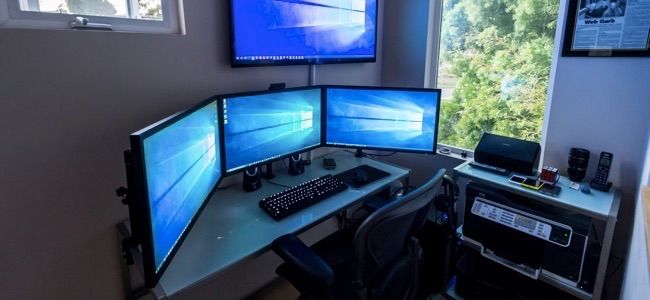Hi,
So recently I got ahold of my 3080 PC and I've been playing games on it quite a lot recently (mostly maxed out Cyberpunk 2077) and everything's been working absolutely fine. No crashing to desktop, no stuttering, nothing after several hours per day over the weekend.
Today though, I've experienced crashes when watching YouTube videos in full screen and after playing games for a set amount of time (usually <20 minutes). Things seemed to get a lot worse when I updated to the most recent driver (released July 19th or so).
At first I thought it was Gsync somehow since it's the only thing that changed about my system before the crashing started (I forgot to enable it at first) but after disabling it the crashing persisted.
One thing I've noticed is that USB controller disconnects and won't turn on again until I unplug it from its USB socket and plug it back in (my mouse and keyboard both switch back on with the reboot), which leads me to believe it's something to do with power draw, but I'm just guessing really. Thermals are all totally fine and I don't notice any performance issues whatsoever, then boom my PC freezes for a second or two and reboots.
I've run DDU to completely uninstall the drivers, reinstalled them and I still get the same problem.
Full technical specs here:
Case
CORSAIR 5000X ICUE TEMPERED GLASS GAMING CASE
Processor (CPU)
AMD Ryzen 7 5800X Eight Core CPU (3.8GHz-4.7GHz/36MB CACHE/AM4)
Motherboard
ASUS® ROG STRIX X570-PLUS GAMING (USB 3.2 Gen 2, PCIe 4.0, CrossFireX) - ARGB Ready!
Memory (RAM)
16GB Corsair VENGEANCE RGB PRO DDR4 3200MHz (2 x 8GB)
Graphics Card
10GB NVIDIA GEFORCE RTX 3080 - HDMI, DP, LHR
1st Storage Drive
2TB Samsung 870 QVO 2.5" SSD, SATA 6Gb/s (up to 560MB/sR | 530MB/sW)
1st M.2 SSD Drive
1TB SAMSUNG 980 PRO M.2, PCIe NVMe (up to 7000MB/R, 5000MB/W)
1st M.2 SSD Drive
1TB SAMSUNG 980 PRO M.2, PCIe NVMe (up to 7000MB/R, 5000MB/W)
Power Supply
CORSAIR 1000W RMx SERIES™ MODULAR 80 PLUS® GOLD, ULTRA QUIET
Power Cable
1 x 1 Metre UK Power Cable (Kettle Lead)
Processor Cooling
Corsair H150i ELITE CAPELLIX RGB Hydro Series High Performance CPU Cooler
Thermal Paste
STANDARD THERMAL PASTE FOR SUFFICIENT COOLING
Sound Card
ONBOARD 6 CHANNEL (5.1) HIGH DEF AUDIO (AS STANDARD)
Network Card
10/100/1000 GIGABIT LAN PORT
USB/Thunderbolt Options
MIN. 2 x USB 3.0 & 2 x USB 2.0 PORTS @ BACK PANEL + MIN. 2 FRONT PORTS
Anyone got any thoughts/ideas here? If it helps it's a Palit Gamingpro 3080. Pretty gutted right now.
So recently I got ahold of my 3080 PC and I've been playing games on it quite a lot recently (mostly maxed out Cyberpunk 2077) and everything's been working absolutely fine. No crashing to desktop, no stuttering, nothing after several hours per day over the weekend.
Today though, I've experienced crashes when watching YouTube videos in full screen and after playing games for a set amount of time (usually <20 minutes). Things seemed to get a lot worse when I updated to the most recent driver (released July 19th or so).
At first I thought it was Gsync somehow since it's the only thing that changed about my system before the crashing started (I forgot to enable it at first) but after disabling it the crashing persisted.
One thing I've noticed is that USB controller disconnects and won't turn on again until I unplug it from its USB socket and plug it back in (my mouse and keyboard both switch back on with the reboot), which leads me to believe it's something to do with power draw, but I'm just guessing really. Thermals are all totally fine and I don't notice any performance issues whatsoever, then boom my PC freezes for a second or two and reboots.
I've run DDU to completely uninstall the drivers, reinstalled them and I still get the same problem.
Full technical specs here:
Case
CORSAIR 5000X ICUE TEMPERED GLASS GAMING CASE
Processor (CPU)
AMD Ryzen 7 5800X Eight Core CPU (3.8GHz-4.7GHz/36MB CACHE/AM4)
Motherboard
ASUS® ROG STRIX X570-PLUS GAMING (USB 3.2 Gen 2, PCIe 4.0, CrossFireX) - ARGB Ready!
Memory (RAM)
16GB Corsair VENGEANCE RGB PRO DDR4 3200MHz (2 x 8GB)
Graphics Card
10GB NVIDIA GEFORCE RTX 3080 - HDMI, DP, LHR
1st Storage Drive
2TB Samsung 870 QVO 2.5" SSD, SATA 6Gb/s (up to 560MB/sR | 530MB/sW)
1st M.2 SSD Drive
1TB SAMSUNG 980 PRO M.2, PCIe NVMe (up to 7000MB/R, 5000MB/W)
1st M.2 SSD Drive
1TB SAMSUNG 980 PRO M.2, PCIe NVMe (up to 7000MB/R, 5000MB/W)
Power Supply
CORSAIR 1000W RMx SERIES™ MODULAR 80 PLUS® GOLD, ULTRA QUIET
Power Cable
1 x 1 Metre UK Power Cable (Kettle Lead)
Processor Cooling
Corsair H150i ELITE CAPELLIX RGB Hydro Series High Performance CPU Cooler
Thermal Paste
STANDARD THERMAL PASTE FOR SUFFICIENT COOLING
Sound Card
ONBOARD 6 CHANNEL (5.1) HIGH DEF AUDIO (AS STANDARD)
Network Card
10/100/1000 GIGABIT LAN PORT
USB/Thunderbolt Options
MIN. 2 x USB 3.0 & 2 x USB 2.0 PORTS @ BACK PANEL + MIN. 2 FRONT PORTS
Anyone got any thoughts/ideas here? If it helps it's a Palit Gamingpro 3080. Pretty gutted right now.

